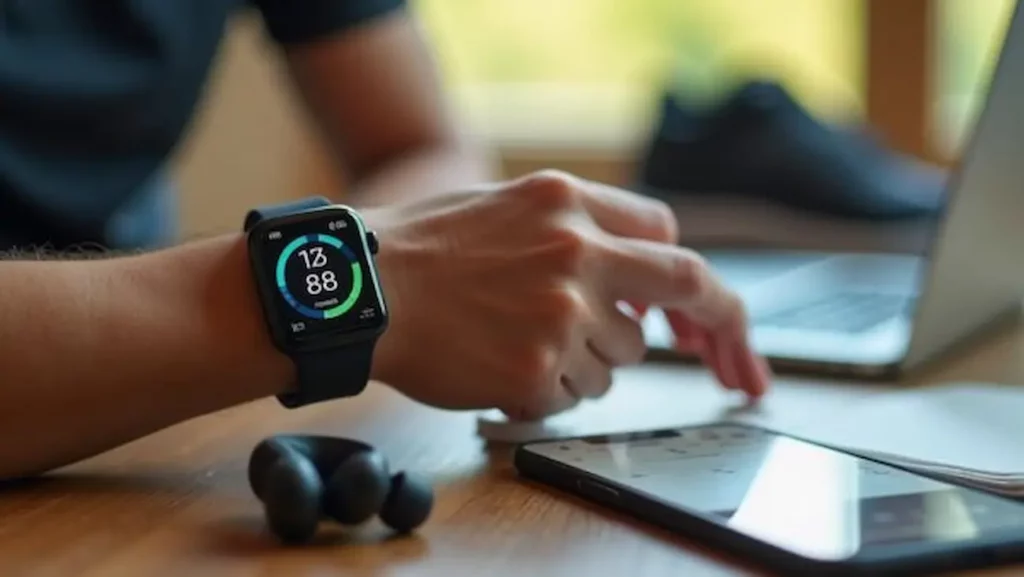
5 Best medication management applications for 2025
Leading the way in 2025, these top medication management apps offer innovative features to simplify your routine—but which one truly stands out? Find out now.

Wearable device integration is the process of linking gadgets like smartwatches and fitness trackers with other digital systems to allow seamless data sharing. This wearable device integration enables continuous health monitoring and personalized insights that can improve both wellness and productivity. By understanding wearable device integration, users can unlock the full potential of their devices for better health management and enhanced professional performance. Integrating wearable devices goes beyond simple data collection to provide meaningful benefits in everyday life.

Understanding wearable device integration is key to unlocking the full potential of these innovative gadgets.
Wearable device integration allows seamless communication between wearable devices and other platforms like smartphones, cloud services, or healthcare systems. This integration ensures real-time data exchange, improving user experience and enabling efficient data management.
Wearable integration depends on several key technologies to ensure continuous and reliable communication. One of the main technologies used in wearable integration is Bluetooth Low Energy (BLE), which allows short-range data transfer between devices.
Additionally, Wi-Fi plays a crucial role in wearable integration by providing internet connectivity for real-time data access. Cloud platforms are also essential in wearable integration, offering data storage and processing capabilities that support seamless device performance.
Furthermore, application programming interfaces (APIs) help connect wearable devices with various software ecosystems, enabling smooth data exchange and synchronization. Understanding these key technologies is vital for developing effective wearable integration solutions.
Using wearable devices offers many benefits for personal health and fitness. These wearable devices help users monitor their activity levels, heart rate, and sleep patterns in real time. By tracking this data, people can improve their personal health and fitness routines more effectively.
Wearable devices also boost motivation through goal setting and reminders, encouraging healthier habits. Overall, these devices provide valuable feedback that supports personalized fitness plans and enhances well-being through greater self-awareness.
Wearable devices have transformed healthcare and medical monitoring by providing continuous tracking of vital signs. These wearables help detect abnormalities early and enable remote patient management, making healthcare more efficient.
With real-time data from wearable devices, medical professionals can make quicker decisions, improving treatment outcomes and reducing hospital visits.
Enhancing workplace efficiency with wearables is transforming how businesses operate.
Wearable devices improve workplace efficiency by streamlining communication, tracking employee health, and managing tasks more effectively. By using wearables, companies can share real-time data, receive proactive alerts to reduce downtime, and ensure better safety compliance.
Integrating wearables into daily operations helps boost productivity and supports employee well-being, making the workplace more efficient and adaptive.
Embracing wearable technology is key to enhancing workplace efficiency in today’s fast-paced environment.
Future trends in wearable device connectivity are set to transform how these gadgets function and interact with users.
Wearable device connectivity improvements, including 5G technology, ultra-low-power Bluetooth, and edge computing, will allow faster data transfer and immediate processing.
This enhanced wearable device connectivity will support better interoperability and AI integration, creating more personalized and seamless experiences.
As a result, wearable device connectivity will expand the use of wearables in healthcare, fitness, and industrial applications.
Wearable device integration is essential for connecting wearable gadgets with larger digital systems. This integration allows real-time data exchange, making wearable device integration crucial for apps that focus on personal health and fitness. By enabling seamless connectivity, wearable device integration helps users track their health, customize fitness programs, and make better healthcare decisions. Moreover, it improves workplace productivity by providing timely insights through connected apps. As technology advances, wearable device integration will continue to enhance smart health management and boost efficiency across various industries.

Leading the way in 2025, these top medication management apps offer innovative features to simplify your routine—but which one truly stands out? Find out now.

Optimize your home workouts with these 4 top apps offering unique features tailored to every fitness level—discover which one fits you best.

Discover 5 dynamic therapy apps designed to transform your mental health—each offering unique tools and support you won’t want to miss.

Wondering how to transform leftover foods into delicious meals? Discover three innovative apps that make reducing waste effortless and enjoyable.

Want to streamline your receipt management? We explore 5 apps that will transform how you organize and track expenses effortlessly.

Find the best apps for meditation that fit your lifestyle and goals—discover features that transform your mindfulness journey today.